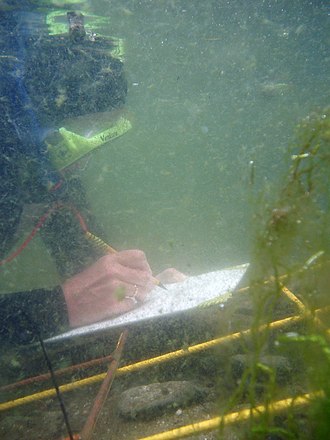Underwater archaeology
Underwater Archaeology
Underwater archaeology is the study of human interaction with the sea, lakes, and rivers through the investigation of submerged sites, artifacts, human remains, and landscapes. It is a branch of archaeology that specifically deals with the study of material remains that lie beneath the water's surface.
History
The origins of underwater archaeology can be traced back to the early 20th century when divers began to explore shipwrecks and submerged settlements. The development of scuba diving technology in the mid-20th century significantly advanced the field, allowing archaeologists to access deeper and more challenging sites.
Techniques
Underwater archaeologists employ a variety of techniques to locate, document, and recover artifacts. These include:
- Surveying and Mapping: Using tools such as sonar, magnetometers, and sub-bottom profilers to locate sites. Once a site is found, archaeologists create detailed maps and drawings, often using scale drawings to document the site accurately.
- Excavation: Carefully removing sediment and debris to uncover artifacts. This process is often more challenging underwater due to visibility issues and the need to preserve the site's integrity.
- Conservation: Artifacts recovered from underwater sites often require extensive conservation efforts to prevent deterioration once they are exposed to air.
Notable Sites
Some of the most famous underwater archaeological sites include:
- The Antikythera Wreck: An ancient Greek shipwreck discovered off the coast of the Greek island of Antikythera, known for the Antikythera mechanism, an ancient analog computer.
- The Mary Rose: A Tudor warship that sank in 1545 and was raised in 1982, providing a wealth of information about naval warfare and life in the 16th century.
- The Uluburun Shipwreck: A Late Bronze Age shipwreck off the coast of Turkey, which has provided significant insights into ancient trade networks.
Challenges
Underwater archaeology presents unique challenges, including:
- Environmental Conditions: Poor visibility, strong currents, and cold temperatures can make underwater work difficult and dangerous.
- Preservation: Artifacts are often well-preserved underwater due to the lack of oxygen, but once exposed to air, they can deteriorate rapidly.
- Legal and Ethical Issues: Many underwater sites are protected by international laws, and archaeologists must navigate complex legal frameworks to conduct their work.
Related Pages
Conclusion
Underwater archaeology is a vital field that enhances our understanding of human history and cultural heritage. By studying submerged sites, archaeologists can uncover new information about past civilizations, trade routes, and technological advancements. Despite the challenges, the field continues to grow, driven by technological advancements and a deeper appreciation for our underwater cultural heritage.
Transform your life with W8MD's budget GLP-1 injections from $125.
W8MD offers a medical weight loss program to lose weight in Philadelphia. Our physician-supervised medical weight loss provides:
- Most insurances accepted or discounted self-pay rates. We will obtain insurance prior authorizations if needed.
- Generic GLP1 weight loss injections from $125 for the starting dose.
- Also offer prescription weight loss medications including Phentermine, Qsymia, Diethylpropion, Contrave etc.
NYC weight loss doctor appointments
Start your NYC weight loss journey today at our NYC medical weight loss and Philadelphia medical weight loss clinics.
- Call 718-946-5500 to lose weight in NYC or for medical weight loss in Philadelphia 215-676-2334.
- Tags:NYC medical weight loss, Philadelphia lose weight Zepbound NYC, Budget GLP1 weight loss injections, Wegovy Philadelphia, Wegovy NYC, Philadelphia medical weight loss, Brookly weight loss and Wegovy NYC
|
WikiMD's Wellness Encyclopedia |
| Let Food Be Thy Medicine Medicine Thy Food - Hippocrates |
Medical Disclaimer: WikiMD is not a substitute for professional medical advice. The information on WikiMD is provided as an information resource only, may be incorrect, outdated or misleading, and is not to be used or relied on for any diagnostic or treatment purposes. Please consult your health care provider before making any healthcare decisions or for guidance about a specific medical condition. WikiMD expressly disclaims responsibility, and shall have no liability, for any damages, loss, injury, or liability whatsoever suffered as a result of your reliance on the information contained in this site. By visiting this site you agree to the foregoing terms and conditions, which may from time to time be changed or supplemented by WikiMD. If you do not agree to the foregoing terms and conditions, you should not enter or use this site. See full disclaimer.
Credits:Most images are courtesy of Wikimedia commons, and templates, categories Wikipedia, licensed under CC BY SA or similar.
Contributors: Prab R. Tumpati, MD





